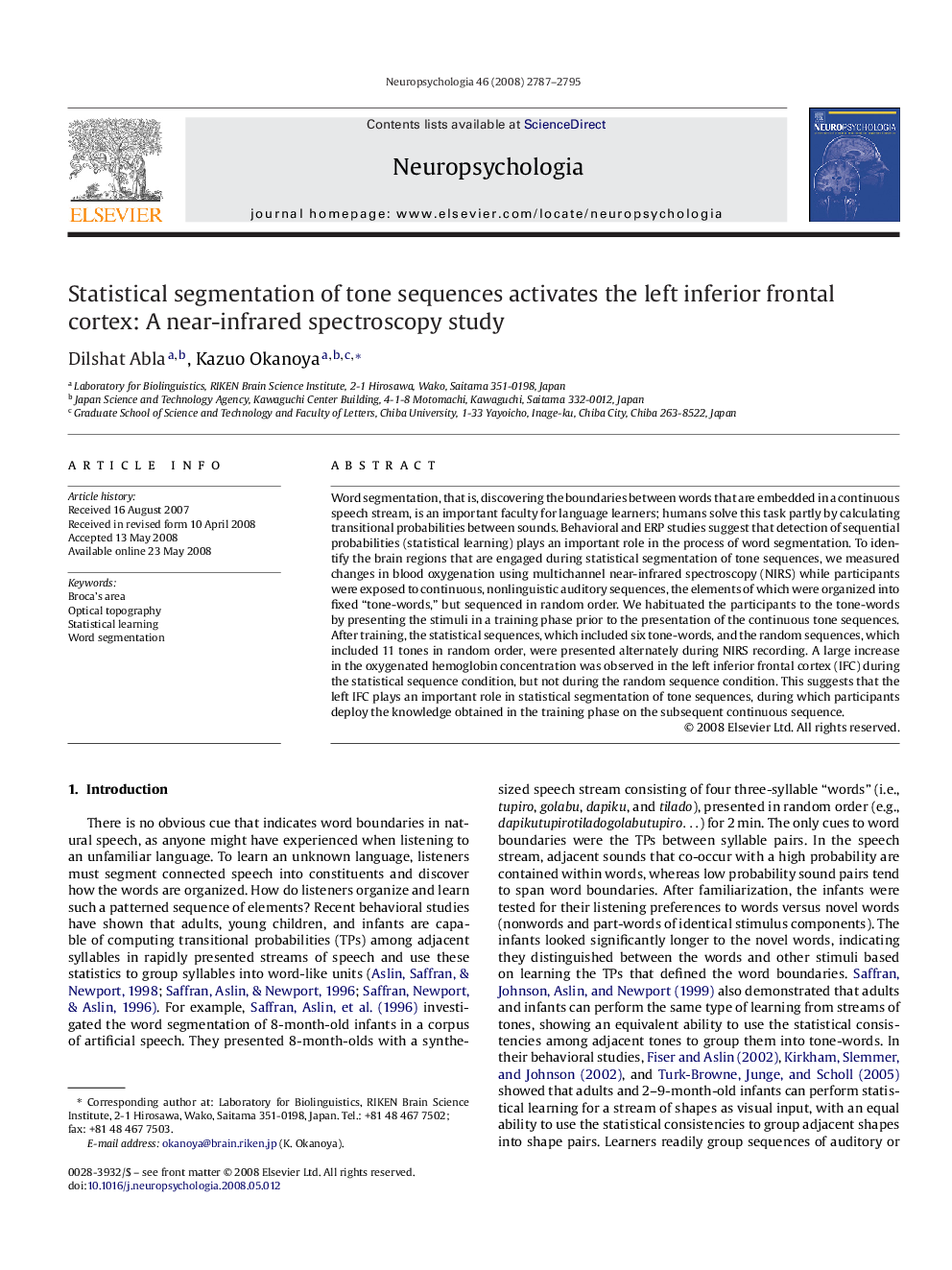| Article ID | Journal | Published Year | Pages | File Type |
|---|---|---|---|---|
| 945364 | Neuropsychologia | 2008 | 9 Pages |
Word segmentation, that is, discovering the boundaries between words that are embedded in a continuous speech stream, is an important faculty for language learners; humans solve this task partly by calculating transitional probabilities between sounds. Behavioral and ERP studies suggest that detection of sequential probabilities (statistical learning) plays an important role in the process of word segmentation. To identify the brain regions that are engaged during statistical segmentation of tone sequences, we measured changes in blood oxygenation using multichannel near-infrared spectroscopy (NIRS) while participants were exposed to continuous, nonlinguistic auditory sequences, the elements of which were organized into fixed “tone-words,” but sequenced in random order. We habituated the participants to the tone-words by presenting the stimuli in a training phase prior to the presentation of the continuous tone sequences. After training, the statistical sequences, which included six tone-words, and the random sequences, which included 11 tones in random order, were presented alternately during NIRS recording. A large increase in the oxygenated hemoglobin concentration was observed in the left inferior frontal cortex (IFC) during the statistical sequence condition, but not during the random sequence condition. This suggests that the left IFC plays an important role in statistical segmentation of tone sequences, during which participants deploy the knowledge obtained in the training phase on the subsequent continuous sequence.
